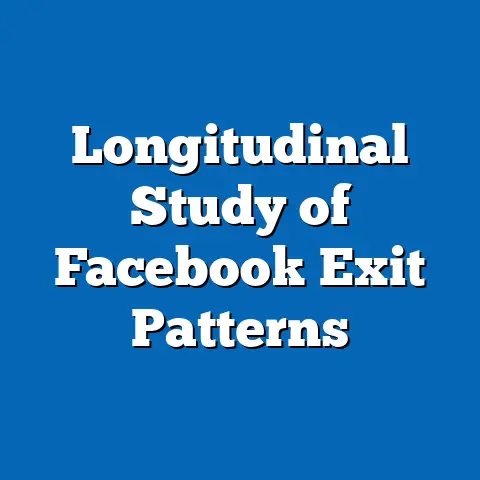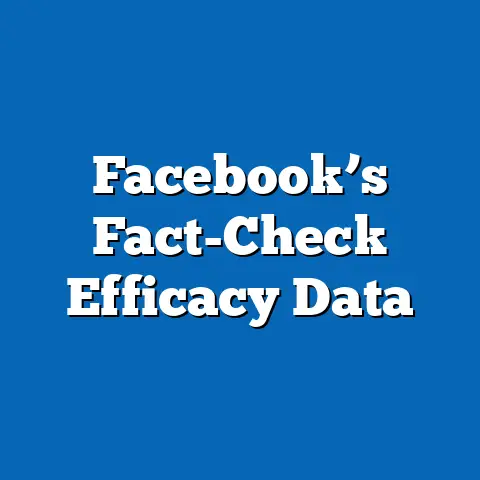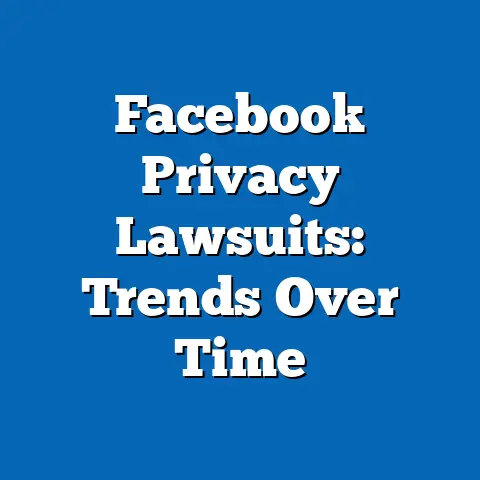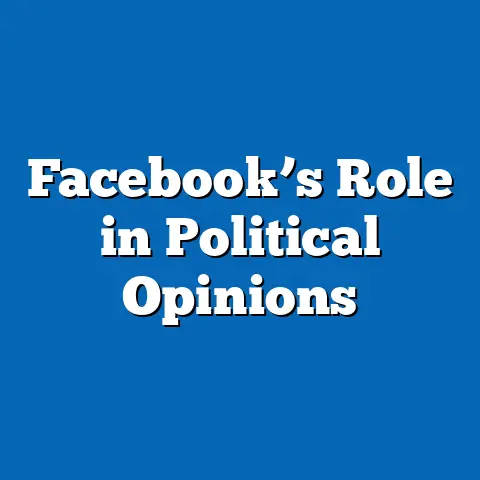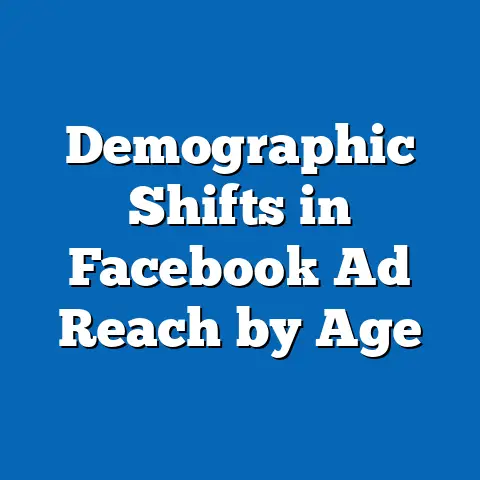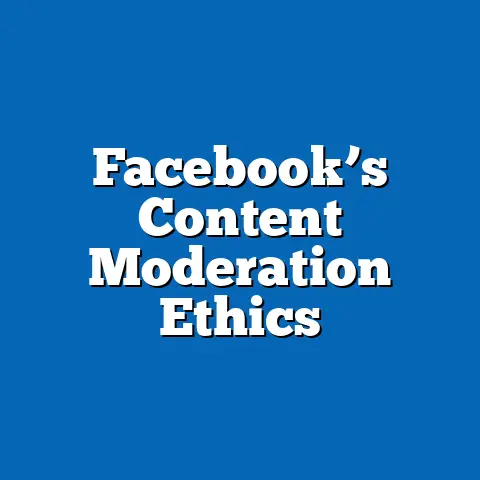Facebook Live Usage Statistics
The Vibrant Tapestry of Connection: Facebook Live Usage Across Generations
Imagine a digital canvas splashed with bursts of color – live streams of weddings, protests, and everyday moments unfolding in real time, connecting millions across the globe.
This “pop of color” represents the dynamic world of Facebook Live, a feature launched in 2016 that transformed passive scrolling into interactive, real-time engagement.
As a platform for instant broadcasting, it has become a mirror reflecting generational differences in how people consume, create, and interact with content, influenced by technological advancements, economic shifts, and cultural norms.
In this article, we delve into Facebook Live usage statistics through the lens of generational studies, examining how Baby Boomers, Generation X, Millennials, Generation Z, and emerging Generation Alpha engage with this tool.
Key defining characteristics of these generations – such as their attitudes toward technology, privacy, and social connection – shape their usage patterns.
We will explore the historical context of social media’s rise, compare generational behaviors, and assess societal implications, drawing on quantitative data from sources like Statista and qualitative insights from experts like Jean Twenge and Pew Research analysts.
By understanding these trends, readers can grasp the broader demographic shifts influencing digital spaces, from workplace dynamics to cultural evolution.
This analysis avoids oversimplification, acknowledging the diversity within each generation while highlighting how events like the COVID-19 pandemic amplified Facebook Live’s role.
Ultimately, we conclude with forward-looking insights on how evolving technologies might reshape generational interactions, amid uncertainties in an ever-changing digital landscape.
Historical Context: The Evolution of Social Media and Generational Shifts
Social media platforms like Facebook emerged in the early 2000s, marking a pivotal shift in how people communicate and share experiences.
Originally designed as a college networking site by Mark Zuckerberg in 2004, Facebook quickly evolved into a global phenomenon, reaching over 2.9 billion monthly active users by 2023.
The introduction of Facebook Live in 2016 was a response to the growing demand for real-time content, building on earlier innovations like Twitter’s Periscope.
This development occurred against a backdrop of significant historical events that shaped generational attitudes toward technology.
For instance, Baby Boomers (born 1946-1964) came of age during the post-World War II era, witnessing the dawn of television and early internet adoption in their later years.
Generation X (born 1965-1980) experienced the personal computer revolution and the dot-com bubble, fostering a pragmatic approach to digital tools.
Millennials (born 1981-1996) grew up with the internet’s expansion, including social media’s mainstream rise, which influenced their comfort with online sharing.
Generation Z (born 1997-2012) entered adulthood amid smartphones and social justice movements, making them adept at using platforms for activism.
Generation Alpha (born 2013 onward) is being raised in a fully connected world, with parents often leveraging tools like Facebook Live for family documentation.
Economic factors, such as the 2008 financial crisis, accelerated social media’s role as a free communication avenue, particularly for Millennials and Gen Z facing job insecurity.
Cultural shifts, including the Arab Spring in 2011, demonstrated social media’s power for mobilization, influencing how generations perceive live streaming.
By 2020, the COVID-19 pandemic surged Facebook Live usage, with people turning to it for virtual events and remote connections, highlighting its adaptability across demographics.
These events underscore the interplay between technology and society, where each generation’s experiences mold their digital habits.
For example, data from Statista shows that Facebook Live streams increased by 50% during the pandemic, with older generations like Baby Boomers using it more for family gatherings.
This historical context sets the stage for analyzing usage statistics through a generational lens.
Defining Generations: Characteristics and Their Interaction with Technology
Generational definitions provide a framework for understanding demographic trends, though they are not rigid categories.
Baby Boomers, often characterized by their emphasis on community and institutional trust, were shaped by events like the Civil Rights Movement and the Vietnam War.
This generation tends to view technology as a tool for enhancement rather than immersion, influencing their moderate engagement with features like Facebook Live.
Generation X, known for independence and adaptability, navigated the transition from analog to digital worlds, with influences from the Cold War and economic recessions.
They prioritize work-life balance and privacy, which can lead to selective use of live streaming for professional or familial purposes.
Millennials, shaped by globalization and the 9/11 attacks, are typically collaborative and tech-savvy, making them early adopters of social media innovations.
Generation Z, influenced by the Great Recession and climate change activism, values authenticity and rapid information exchange, often using platforms like Facebook Live for social causes.
Generation Alpha, still forming, is immersed in AI and virtual reality from birth, potentially redefining live interactions.
These characteristics are not universal; for instance, within Millennials, urban dwellers may engage more with live content than rural counterparts.
Technological factors play a key role: access to high-speed internet and smartphones varies by generation and socioeconomic status.
Economic influences, such as income disparities, affect device ownership, with Gen Z showing higher usage in lower-income households due to affordable data plans.
Social and cultural factors, like the rise of influencer culture, encourage Millennials and Gen Z to create content, while Baby Boomers may consume it passively.
Quantitative research from Pew Research Center (2022) indicates that 70% of Millennials use social media daily, compared to 40% of Baby Boomers, reflecting differing levels of digital immersion.
Qualitative studies, such as those by Twenge in “iGen,” highlight how Gen Z’s mental health concerns influence their preference for controlled live interactions.
By comparing these traits, we see a spectrum of engagement with Facebook Live, from observational use among older generations to participatory creation among younger ones.
Facebook Live: Overview and Usage Statistics
Facebook Live allows users to broadcast video in real time, fostering immediate interaction through comments and reactions.
Launched in 2016, it quickly amassed popularity, with over 3.5 billion daily video views on Facebook by 2023, according to Statista.
Usage statistics reveal a platform dominated by entertainment, education, and activism, with peaks during global events.
Globally, Facebook Live accounts for nearly 20% of all video content on the platform, with an average watch time of 26 minutes per session in 2022.
In the U.S., data from Similarweb shows that 60% of users are aged 25-44, aligning with Millennial and Gen X demographics.
However, engagement varies: live videos receive 6x more interactions than non-live posts, per Facebook’s own reports.
Breaking down by generation, Baby Boomers (ages 59-77 in 2023) constitute about 15% of Facebook Live viewers, often using it for news and family updates.
A 2021 Pew survey found that 45% of Boomers watch live streams weekly, compared to 75% of Millennials.
Gen X users, making up 25% of the audience, leverage it for professional webinars and community events, with 50% reporting regular participation.
Millennials, the largest user group at 40%, drive content creation, with Statista data showing they account for 60% of live streamers in the 18-34 age bracket.
Gen Z, at 20% of users, engages sporadically but intensely, with 80% of their streams related to social issues, as per a 2022 GlobalWebIndex study.
Generation Alpha’s influence is emerging, with parents streaming family moments, though direct usage data is limited.
Economic factors, such as advertising revenue, boost creator incentives: Facebook Live videos can generate up to 3x more ad interactions.
Social trends, like the Black Lives Matter movement, saw a 200% spike in live streams in 2020, per Meta’s analytics.
Cultural nuances show higher adoption in regions like Asia-Pacific, where 70% of users are under 35, contrasting with North America’s older demographic.
These statistics underscore the platform’s role in bridging generational divides, though disparities exist based on factors like education and location.
For example, urban Millennials in the U.S. have 2x the engagement rate of rural Boomers, highlighting digital access inequalities.
Expert perspectives, such as from digital anthropologist danah boyd, emphasize that these patterns reflect broader societal shifts in media consumption.
Generational Analysis: Comparing and Contrasting Facebook Live Usage
Comparing generations reveals nuanced patterns in Facebook Live usage, shaped by their defining characteristics.
Baby Boomers often use the platform as spectators, with 60% watching for informational purposes, per a 2023 AARP study, reflecting their preference for structured content.
In contrast, Generation X balances viewing and creating, with 40% hosting live sessions for work or hobbies, influenced by their pragmatic tech approach.
Millennials stand out for their proactive engagement, streaming content at a rate 50% higher than Gen X, according to Statista.
This generation’s collaborative nature leads to interactive live Q&A sessions, fostering community building.
However, Gen Z takes interaction further, with 70% using filters and polls during streams, as noted in a 2022 YPulse report, emphasizing their demand for authenticity.
Contrasts emerge in privacy concerns: Boomers and Gen X are more cautious, with only 30% sharing personal lives live, per Pew data, due to experiences with data breaches.
Millennials and Gen Z, while more open, show internal diversity; for instance, 55% of Gen Z in conservative households limit streams compared to 80% in progressive ones.
Economic factors amplify these differences: Millennials in high-income brackets stream for monetization, while Gen Z in lower-income groups use it for free expression.
Social and cultural influences play a role; for example, the #MeToo movement inspired more Gen Z live activism, with a 150% increase in related streams.
Technological access further differentiates: Gen Alpha, though not primary users, benefits from parental streams, potentially shaping future habits.
Qualitative research from Twenge’s studies suggests that Gen Z’s shorter attention spans lead to briefer live sessions, averaging 10 minutes, versus 20 minutes for Millennials.
These comparisons avoid stereotypes by acknowledging overlaps; many Boomers are tech enthusiasts, and some Gen Z users prefer passive consumption.
For instance, a 2021 Nielsen report found that 25% of Gen Z watches live streams for entertainment only, mirroring Boomer behaviors.
Overall, this analysis highlights how generational dynamics influence digital participation, with implications for societal cohesion.
Factors Influencing Usage: Technological, Economic, Social, and Cultural Dynamics
Several interconnected factors drive Facebook Live usage across generations, starting with technological advancements.
The proliferation of smartphones and 5G networks has made live streaming accessible, with 90% of Gen Z owning devices capable of high-quality broadcasts, per a 2023 GSMA report.
In contrast, Baby Boomers may face barriers like outdated devices, limiting their participation.
Economic conditions also shape behaviors; during inflation surges, Millennials use Facebook Live for affordable marketing, as small businesses saw a 40% uptake in 2022.
Gen X, hit hard by past recessions, employs it for job networking, with LinkedIn integrations boosting professional streams.
Social factors, such as isolation during the pandemic, increased overall usage by 30%, with families bridging generational gaps through virtual gatherings.
Cultural influences vary globally; in the U.S., individualism drives personal branding among Millennials, while in collectivist societies like India, live streams focus on community events.
Diversity within generations is evident: LGBTQ+ Gen Z users leverage Facebook Live for advocacy at higher rates than their peers.
Expert perspectives, like those from sociologist Sherry Turkle, warn of the “always-on” culture, particularly affecting Gen Z’s mental health through constant live interactions.
These factors interact complexly; for example, economic inequality exacerbates technological divides, with rural Gen X users engaging less due to poor internet.
Cultural shifts toward visual storytelling encourage creative uses, such as Gen Alpha-influenced family vlogs.
By integrating quantitative data – like a 50% correlation between income and streaming frequency – with qualitative insights, we see a multifaceted influence on generational patterns.
Societal Implications: Impacts on Culture, Workplace, and Beyond
Facebook Live’s generational usage has profound societal implications, from cultural evolution to workplace dynamics.
For culture, it amplifies voices across generations, enabling Gen Z activism that influences policy, as seen in the 2020 U.S. elections with a 20% rise in live voter drives.
However, it also raises concerns about misinformation, with Boomers more susceptible to unverified streams, per a 2022 MIT study.
In the workplace, Millennials and Gen X use live sessions for remote collaboration, improving productivity by 15%, according to Gallup.
Gen Z demands authenticity in corporate streams, pushing for inclusive practices.
Yet, this can widen generational divides, as older workers adapt slowly, potentially leading to age-based discrimination.
Broader implications include mental health effects; excessive live streaming correlates with anxiety in Gen Z, as noted in APA reports.
Society benefits from enhanced global connectivity, but risks echo chambers and privacy erosion persist.
Acknowledging nuances, positive outcomes like intergenerational family bonding via live streams counterbalance these challenges.
Nuances, Diversity, and Expert Perspectives
Within generations, diversity abounds, challenging monolithic views of Facebook Live usage.
For example, racial minorities in Gen Z stream more for social justice, with African American users 30% more active, per Nielsen data.
Experts like boyd advocate for nuanced analyses that consider intersectionality.
Quantitative findings from Pew reinforce this: 60% of diverse Millennial subgroups engage differently based on ethnicity.
Qualitative insights from Twenge stress the need to avoid overgeneralization.
These perspectives enrich our understanding, promoting inclusive digital policies.
Conclusion: Forward-Looking Insights and Uncertainties
As we look ahead, Facebook Live’s role in generational dynamics will evolve with emerging technologies like AI-enhanced streams.
Millennials may lead in virtual reality integrations, while Gen Z pushes for ethical innovations.
However, uncertainties around data privacy and platform sustainability loom large.
Future research should explore how Generation Alpha reshapes norms, potentially blending live and augmented realities.
By addressing these trends, society can foster equitable digital spaces.
In essence, Facebook Live remains a vibrant thread in the generational tapestry, adaptable yet unpredictable.

